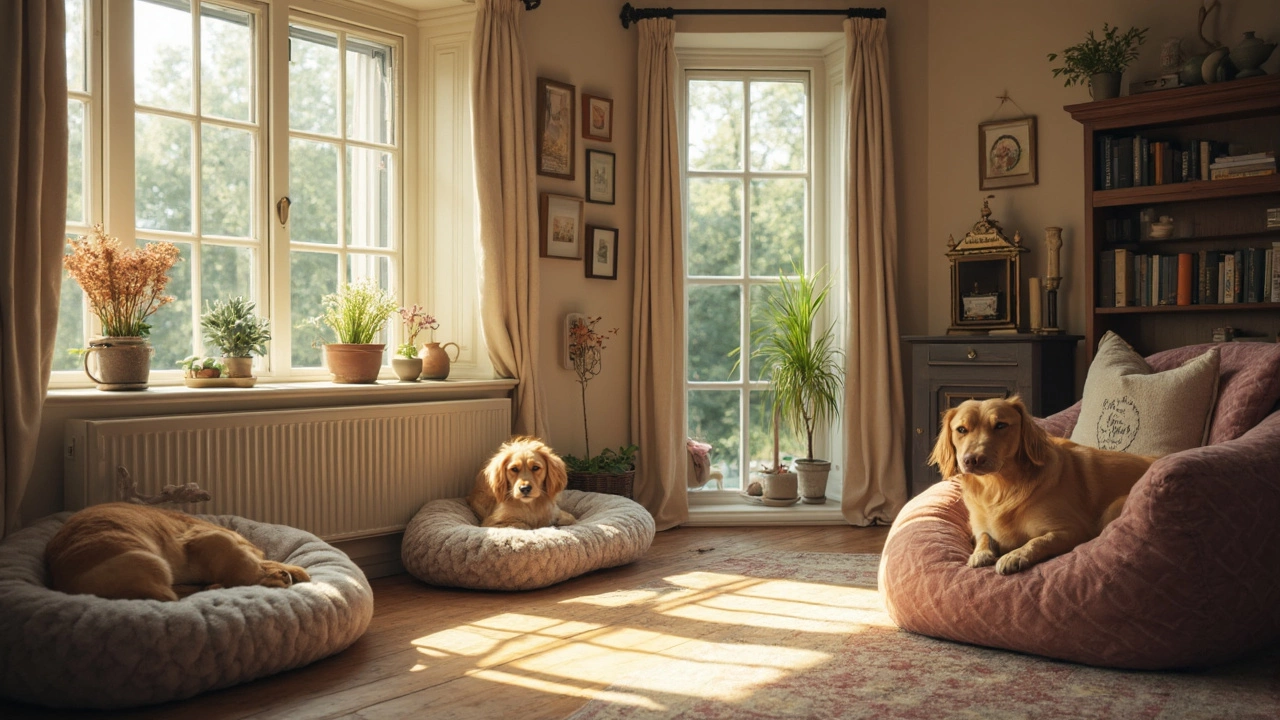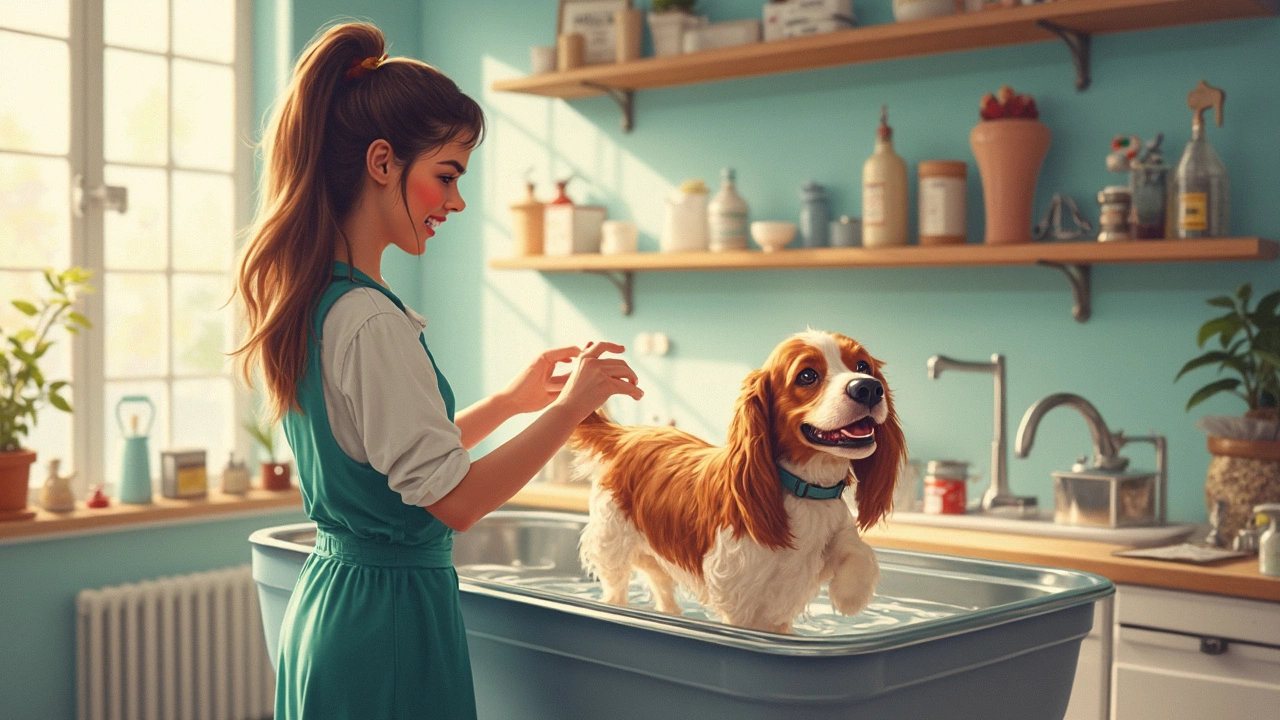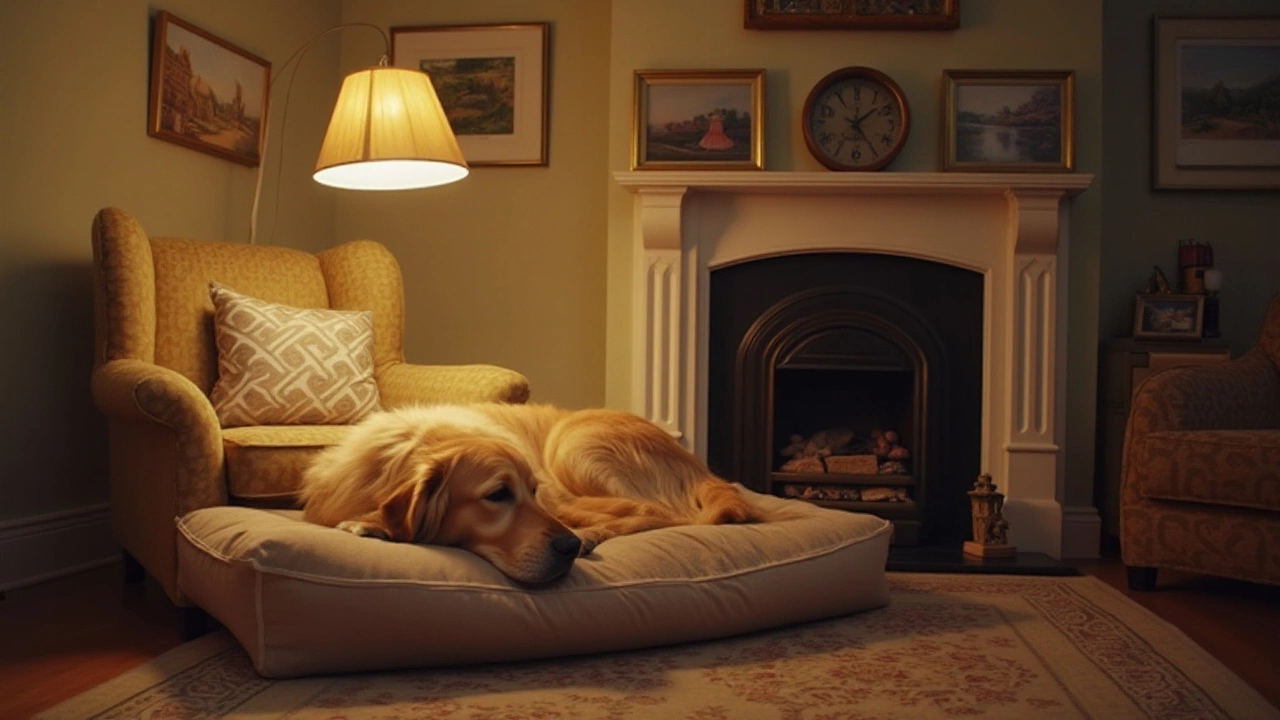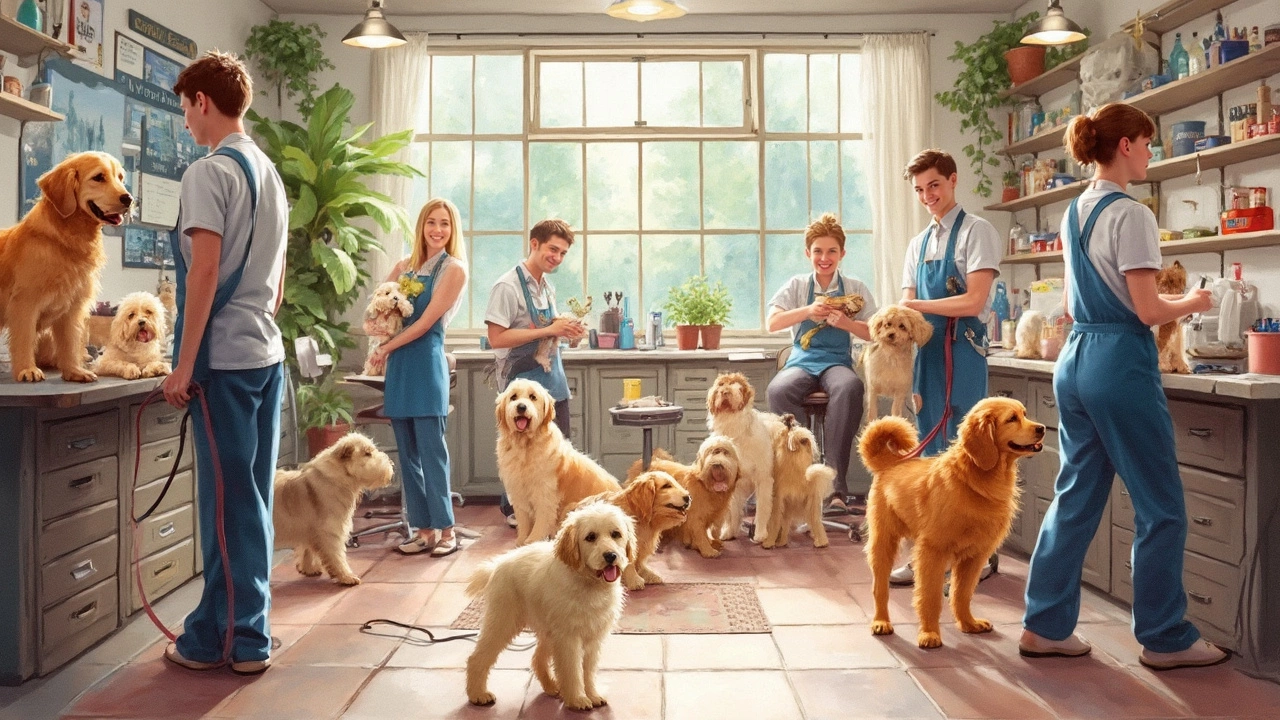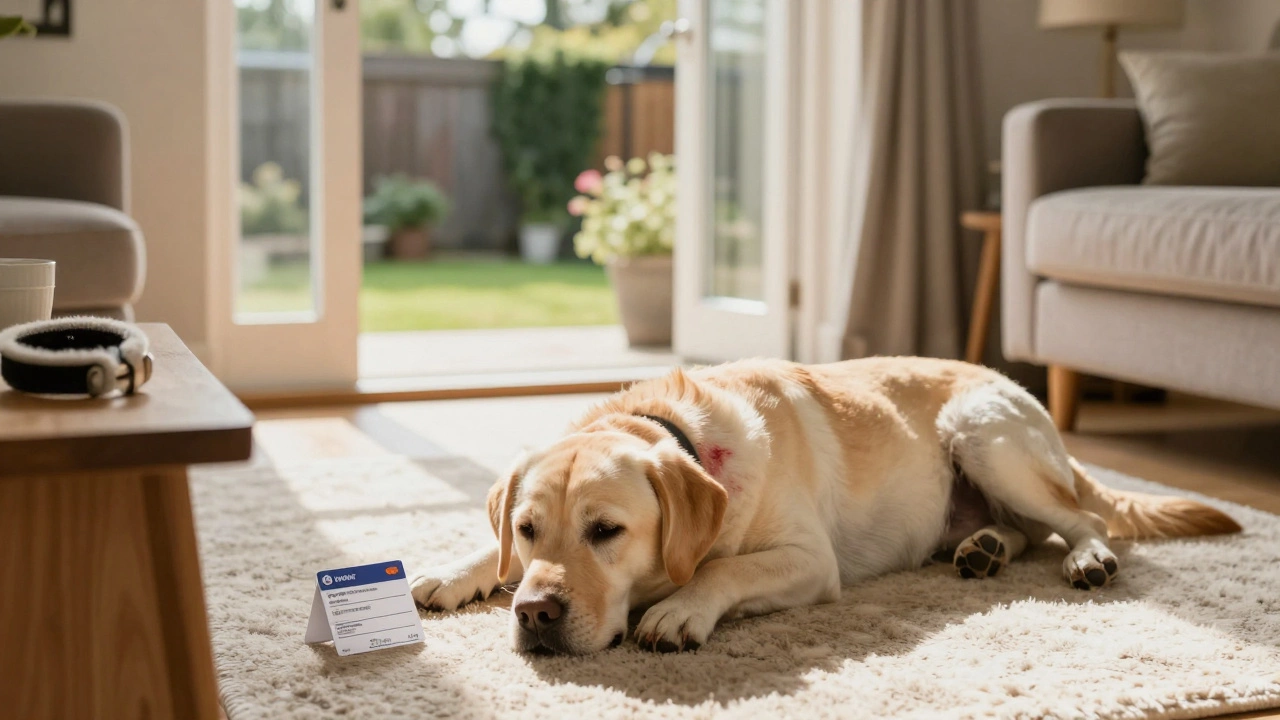Picture this: you’re sipping coffee in the kitchen, your dog’s stretched out next to your feet, probably giving you those gentle puppy eyes. Now, imagine walking into the living room, dog at your heels, searching for a cozy spot but finding just the cold floor. Does every room in the house need a dog bed? It’s the kind of question Finnian asked me over breakfast, and it got me thinking—few things divide pet lovers quite like this debate. Dogs are part of the family. Some people treat their pups to hand-knitted sweaters and gourmet treats, so the idea of a dog bed in every room doesn't seem too wild, does it? But on the flip side, is it a bit much?
Why Your Dog Might Love—or Need—a Bed in Every Room
Let’s get real. Dogs love following us from one room to another. We move, they move. Places like the kitchen or the home office become their temporary basecamps while they stand guard or snore through Zoom calls. Imagine if every time your dog wanted to settle down, there was already a snuggly spot waiting. Not a big ask, right? But there’s a practical side too.
Having a dog bed in every room can actually help prevent joint pain, especially in older or giant breeds. Hard surfaces put pressure on elbows, hips, and paws. Over time, that can turn into arthritis or even just a nagging limp. The Royal Veterinary College in London reported that about 20% of dogs over the age of 1 already show signs of osteoarthritis. Even younger dogs can benefit from padded support, especially if your floors are cold tiles or old-school hardwood.
There’s more—a bed in every room can help with boundaries. Dogs are creatures of habit. Beds act as “safe zones” so they know where they’re welcome to chill and where’s off limits (like your bed, maybe?). If your dog likes to nap in the sun and your windows track it around the house, a bed in each sunny patch can keep their nap game strong.
Ever had a guest over who’s nervous around dogs? It’s way easier to give your dog a quiet place to retreat rather than scrambling to get them upstairs or into another room. It’s peace of mind for you and comfort for them. Plus, muddy paws are less likely to stain your sofa if there’s a bed drawing them away like a comfy magnet.
What Are the Drawbacks of Multiple Dog Beds?
Of course, we can’t ignore the practical downsides. The biggest two? Space and cleaning. More beds mean more square footage lost to floofy rectangles or donut-shaped cushions. Small flats in places like Bristol (trust me, I know) can start looking like a doggy showroom before long. Got a Pinterest-worthy living room vibe going on? Multiple beds might clash with your aesthetic. And if you’re a neat freak, stray dog hair and that lovely “wet dog” scent get multiplied with every bed added.
Let’s not gloss over the hygiene bit. Dogs—bless their hearts—bring the outdoors indoors. A study by the Animal and Plant Health Agency found that pet beds pick up everything from pollen to microscopic mites daily. In a weird way, having more beds is both a blessing and a curse—you’re keeping your dog (and your furniture) cleaner, but you’re also signing up for way more laundry days. Washing dog beds isn’t always easy if the covers don’t zip off, and some cheaper beds refuse to come out of the spin cycle looking anything but sad.
Cost stacks up too. Sure, basic beds can be picked up for next to nothing, but orthopedic, hypoallergenic, or fancy designer dog beds? Those can cost more than your own mattress. Do you need a memory foam dog bed in the downstairs loo? Probably not. There’s also the risk that your dog will totally ignore the plush purchase and, because they’re dogs, pick the uncomfortable spot anyway. Sod’s law, right?
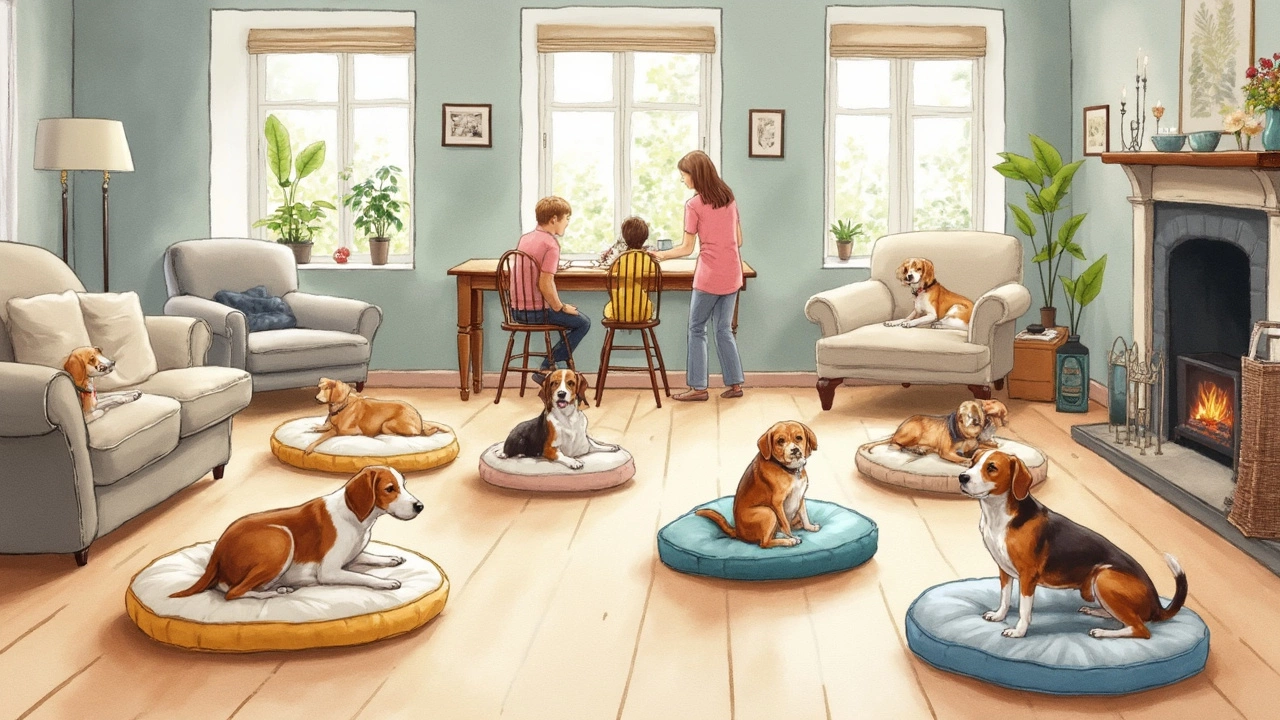
How to Decide If Multiple Beds Fit Your Home (and Dog)
This isn’t a one-size-fits-all thing. Start by being honest about your dog’s behavior. Are you living with a velcro dog or a snoozy couch potato? Some breeds (Labradors, Staffies, Whippets) are notorious shadowers—they just want to be where you are. Others (hello, Huskies) like their independence and may not care if there’s a bed in every room.
Watch where your dog gravitates. If they already curl up under your desk when you work, it might make sense to give them a small bed right there. Some dogs just want a spot in the living room and the bedroom, and that’s it. Think about where you spend most of your time. Do you have a garden-facing lounge or maybe a home gym? If your dog loves to sunbathe or “help” with your workouts, toss a washable mat or bed there. You don’t always need to go full deluxe—sometimes a folded blanket does the trick.
If space is tight, consider beds that double up as furniture, like those woven baskets or under-coffee-table crate beds that look nice and save space. Always measure first; a bed that crowds the doorway or trips guests becomes a daily frustration. And if you have a large family or other pets, everyone’s needs matter too. No one wants to play musical chairs just to avoid stepping on a dog bed during the school rush each morning.
Dogs with medical issues—like arthritis, allergies, or thin coats—may genuinely need extra comfort. For puppies still learning boundaries (and where not to chew), a bed in each room can reinforce the idea that they have a cozy place of their own, no matter where you are in the house.
Making Multiple Dog Beds Work for Every Family
If you’re going for it, keep things practical. Not every bed has to be a massive statement piece. Look for easy-wash covers and sturdy, chew-resistant fabrics. You can even rotate beds by moving them from room to room if you want to keep things fresh (and avoid expensive purchases all at once). Consider different styles—maybe a thicker orthopedic foam in the sitting room and a lighter travel mat in the kitchen or hall.
Here’s a tip: keep a checklist when shopping. Prioritize:
- Washability – Can you strip and toss the cover in the wash weekly?
- Fit – Is it the right size for your dog’s stretch vibes or curled-up snoozes?
- Durability – Will it survive a muddy post-walk flop?
- Non-slip bottoms – Especially important if you’ve got slippy floors or zoomy dogs.
- Material – Hypoallergenic filling matters if your pup’s a sneezer.
If your place is already packed, use space-saving options, like mats or crate pads. Even cardboard boxes lined with old towels (the Finnian solution) work for short-term comfort. If you’re crafty, try upcycling: an old jumper stuffed with soft filling can turn into an excellent makeshift nest.
To keep the house from smelling too ‘doggy,’ vacuum around beds regularly and swap out liners after rainy-day romps. Spritzing beds with animal-safe fabric sprays helps, and a study from the University of Lincoln found that scent-blanketed beds reduce stress in nervous dogs during storms or fireworks night. Keep chew toys nearby to stop bored pups from nibbling the beds themselves. Train your dog to “go settle” by rewarding them for using their spot, making it a positive place, not somewhere they’re banished.
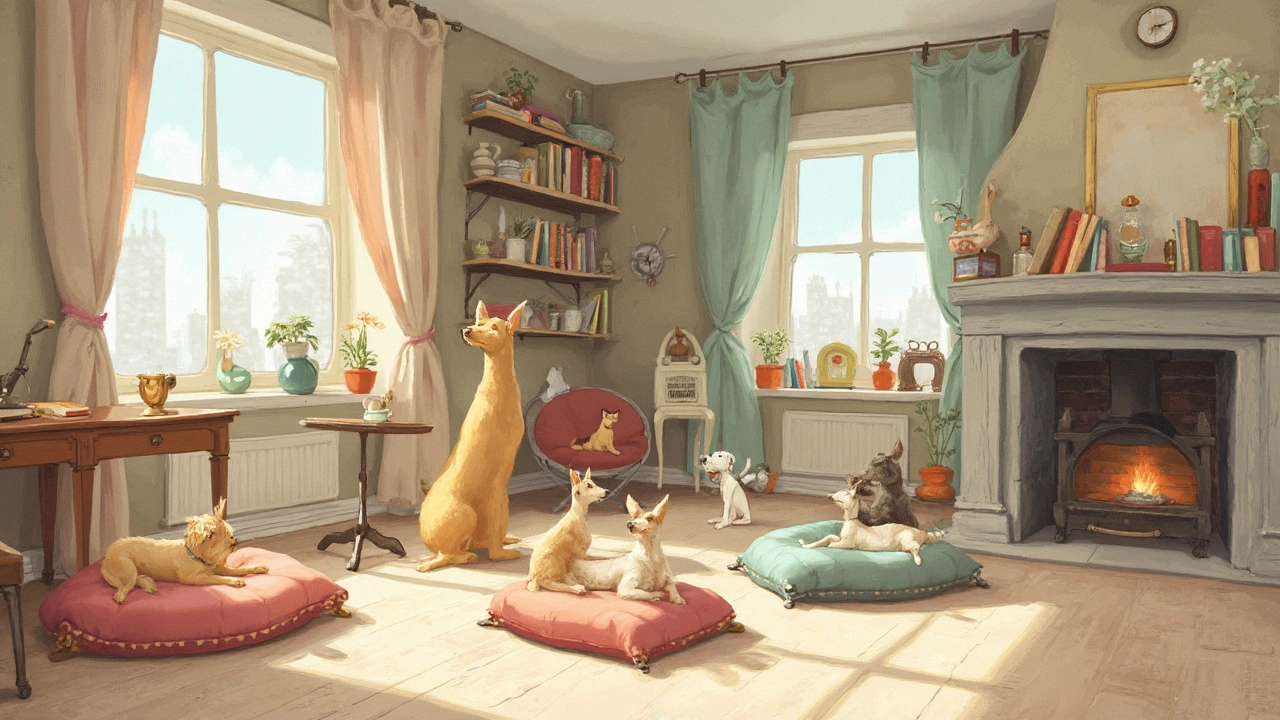
Do Multiple Beds Actually Change Dog Behavior? What the Science Says
This might surprise you: having more than one bed can actually have subtle effects on your dog's wellbeing. A 2021 study from the University of Bristol—right in my backyard—found that dogs given options for sleeping places were less likely to show destructive behavior. Dogs love choice. It makes their day-to-day less stressful, especially for breeds prone to anxiety. The research showed a 34% drop in separation-related problem behaviors in homes with more than one dedicated dog resting spot.
But it’s not just about comfort. When dogs are given “territory” in each common area, they’re far more likely to rest instead of “pacing” when their humans leave the room. Vets at Blue Cross have linked pacing, whining, and even chewing furniture to a lack of a clear, cozy place for a dog to decompress. So extra dog beds do more than spoil your pooch—they can create a calmer, happier environment that benefits everyone. That’s handy if your dog gets twitchy during thunderstorms or hates being crated.
A little data for the numbers people:
| Factor | Single Dog Bed | Multiple Dog Beds |
|---|---|---|
| Reported Anxiety Behaviors | 55% | 21% |
| Furniture Chewing Incidents | 32% | 11% |
| Sleep Quality (Owner-rated) | 6.2/10 | 8.7/10 |
| Average Cleaning Time/Week | 45 mins | 1 hr 15 mins |
So, more beds, less stress—but more washing. Worth it for the peace? Only you and your dog can decide.

